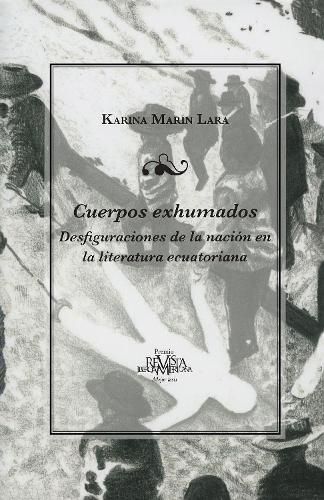Readings Newsletter
Become a Readings Member to make your shopping experience even easier.
Sign in or sign up for free!
You’re not far away from qualifying for FREE standard shipping within Australia
You’ve qualified for FREE standard shipping within Australia
The cart is loading…






La autora de este libro formula una invitacion a problematizar la historiografia literaria ecuatoriana y, de forma implicita, cualquier corpus literario construido a partir de un proyecto nacional. Para ello, se vale de imagenes corporales problematicas que el canon literario ha dejado pasar por alto. Saturadas de violencias y exclusiones historicas normalizadas, esas imagenes tienen un peso incomodo, convenientemente olvidado. El trabajo propone asi una metodologia: la de la exhumacion de esos cuerpos que apunta a una lectura por intuicion. Se trata, entonces, de imaginar para recuperar los restos que han quedado sepultados bajo un conjunto de valores tradicionales, tanto esteticos como politicos que, en lugar de expandir, restringen las posibilidades de leer ciertas obras literarias mas alla de los requerimientos constitutivos de lo nacional. En dialogo interdisciplinario con las teorias de la imagen y con los estudios del cuerpo y de la discapacidad, estas paginas plantean una reivindicacion del caracter politico y etico de todo ejercicio de critica literaria.
~
The author of this book extends an invitation to question Ecuadorian literary historiography and, implicitly, any literary corpus built with a national project a its starting point. In order to do this, she uses problematic body images that the literary canon has overlooked. Saturated with violence and normalized historical exclusions, these images have an uncomfortable weight that has been conveniently forgotten. The work thus proposes a methodology: the exhumation of those bodies that points to a reading by intuition. It then becomes about imagining so as to recover the remains that have been buried under a set of traditional values, both aesthetic and political which instead of expanding, restrict the possibilities of reading certain literary works beyond the constitutive requirements of a nation. In an interdisciplinary dialogue with image theories and with studies of the body and disability, these pages raise a claim for the political and ethical nature of any exercise in literary criticism.
$9.00 standard shipping within Australia
FREE standard shipping within Australia for orders over $100.00
Express & International shipping calculated at checkout
La autora de este libro formula una invitacion a problematizar la historiografia literaria ecuatoriana y, de forma implicita, cualquier corpus literario construido a partir de un proyecto nacional. Para ello, se vale de imagenes corporales problematicas que el canon literario ha dejado pasar por alto. Saturadas de violencias y exclusiones historicas normalizadas, esas imagenes tienen un peso incomodo, convenientemente olvidado. El trabajo propone asi una metodologia: la de la exhumacion de esos cuerpos que apunta a una lectura por intuicion. Se trata, entonces, de imaginar para recuperar los restos que han quedado sepultados bajo un conjunto de valores tradicionales, tanto esteticos como politicos que, en lugar de expandir, restringen las posibilidades de leer ciertas obras literarias mas alla de los requerimientos constitutivos de lo nacional. En dialogo interdisciplinario con las teorias de la imagen y con los estudios del cuerpo y de la discapacidad, estas paginas plantean una reivindicacion del caracter politico y etico de todo ejercicio de critica literaria.
~
The author of this book extends an invitation to question Ecuadorian literary historiography and, implicitly, any literary corpus built with a national project a its starting point. In order to do this, she uses problematic body images that the literary canon has overlooked. Saturated with violence and normalized historical exclusions, these images have an uncomfortable weight that has been conveniently forgotten. The work thus proposes a methodology: the exhumation of those bodies that points to a reading by intuition. It then becomes about imagining so as to recover the remains that have been buried under a set of traditional values, both aesthetic and political which instead of expanding, restrict the possibilities of reading certain literary works beyond the constitutive requirements of a nation. In an interdisciplinary dialogue with image theories and with studies of the body and disability, these pages raise a claim for the political and ethical nature of any exercise in literary criticism.